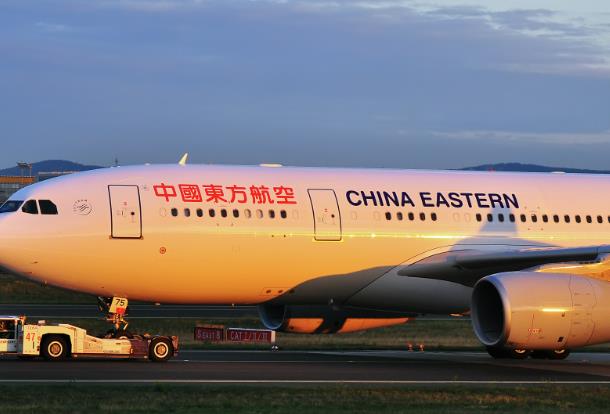With passenger numbers set to double over the next 20 years, the aviation industry will need to keep up with the demands of an increasingly connected and tech-savvy traveler.
The latest update to the International Air Transport Association (IATA) 20-Year Air Passenger Forecast anticipates a 3.5% compound annual growth rate (CAGR) for the air transport industry resulting in passenger numbers as high as 8.2 billion in 2037.
IATA’s forecast also shows an increasing shift eastwards, with the center of gravity moving to markets such as China, where most consumers are mobile-first technology users and have already shown a preference for alternative payments methods and quick, reliable, convenient transactions.
These consumers are eager to explore the world, but their digital habits mean that technology, as a tool to simplify travel, has become even more critical.
A new generation of distribution
We are witnessing a new generation of distribution that offers fundamentally different ways to purchase. Concurrently, initiatives like IATA’s New Distribution Capability (NDC) are enabling the industry to transform the way air tickets are sold to travelers, by allowing for integrations with more product differentiation and access to fuller, more dynamic air content, independent of the traditional GDS.
Alongside this, many other platforms have been built offering APIs which connect deeper into airline distribution data, making transactions transparent and ticketing simpler.
Adopting the NDC standard presents opportunities for airlines to leverage their APIs and provide value to customers to sell more than just essential travel components to their customers: transport, accommodation and destinations.
For example, Finnair is now capitalizing on NDC for advanced destination retailing, giving customers an opportunity to book experiences in Lapland, both through travel agents and on mobile through an API.
Skyscanner continues to see the benefits of engaging with IATA on NDC adoption and being the first to achieve Level 3 certification in 2016. Skyscanner is also the first global search site to join the new NDC Exchange, which allows API connectivity between airlines and travel sellers and facilitates shopping, booking and servicing workflows, including the cross-selling of ancillary services among airlines.
Through direct booking, airlines are effortlessly converting browsing to booking with an average 20% conversion uplift (50% in mobile conversions) in addition to a 100% uplift on ancillary revenue. Ultimately, products and services that are packaged well, presented in the right context and offered at the right time, are more likely to add value to the traveler – and consequently airlines capable of achieving this are more likely to benefit.
We want to bring airline products on Skyscanner’s site as close to the direct experience as possible, with carriers controlling their products and brand while benefiting from our traffic, and audience, across a range of devices. Skyscanner delivered revenue growth in its direct booking program of approximately 600% year-over-year in the first quarter of 2018.
Next year, the adoption of NDC by airlines will continue to accelerate with the effective use of NDC standards to introduce new products and offers to travelers gaining traction.
Acceleration to mobile
If we start with consumers, the global shift from desktop to mobile is undeniable with travelers increasingly looking for seamless mobile experiences, native payments and world-class customer service. With 43% of bookings in China completed on a mobile device, this and other markets in Southeast Asia are well ahead of the curve, setting trends across the digital economy that we see diffusing into global markets.
IATA predicts that there will be as many as 8.2 billion air travelers by 2037, and the bulk of that growth will come from the Asia Pacific region where consumers have mobile-first habits. This makes it critical for airlines to embrace mobile platforms from travel search to bookings and throughout the entire journey.
And markets around the world are showing a growing preference for mobile platforms. As Deloitte reported in its 2017 mobile consumer trends update, mobile devices have now become an intrinsic part of life in economies around the world, with more than 90% penetration. Smartphones serve in place of computers for many consumers in developing economies with an average 82% penetration.
This year progress has been reported by many airlines. For example, Pegasus reported a 90% compound annual growth rate in mobile booking share (both through the app and the mobile website) over the past three years. Airlines have to consider how these tools are rewiring consumers' transaction habits - impacting UX design as well as workflows and back-end systems.
Faster transactions across multiple platforms
Consumer payment habits are evolving at a fast pace, with a shift in favor of mobile payments in some markets, particularly China thanks to rapid smartphone adoption. Airlines have already made the shift to accept alternative payments like WeChat Pay, Alipay and Apple Pay and are reaping the benefits.
Finnair became the first airline to team up with Alipay for in-flight shopping and payment in January of last year and reported a 200% increase in onboard sales after adopting Alipay.
Alternative payments will only grow in the future, as we see a closer relationship between a person’s identity and their mobile device.
Moreover, continuous demand for enhanced security and identification systems has led to increasing adoption of biometric data encryption devices such as Face ID. Research from Gartner predicted that by the end of 2020, businesses that invest in new authentication methods, such as biometrics, would experience 50% fewer identity-related security breaches than those who didn’t.
Most digital wallets use better authentication methods to confirm purchase intent and identity than credit cards, and two-factor authentication adds a layer of security, which is not omnipresent across all card issuers.
Finally, most alternative payment methods carry lower fees for merchants, which certainly reduces the cost burden of non-cash transactions. For airlines, there is much to gain beyond a boost in bookings, including a cost reduction in credit card, transaction fees and fraud protection.
How will voice and AI impact tomorrow’s travelers?
Accompanying a shift to mobile is a greater reliance on voice assistants. According to U.S. analytics firm ComScore, 50% of searches worldwide will be carried out via voice by 2020.
While the use case is still in its infancy, some airlines see voice as an integral part of the consumer’s digital ecosystem and want to be present. Air Canada’s Alexa skills offer customers flight status information, fare quotes, mobile app tips and general travel information on what documents are required as well as ticket policies, TSA PreCheck availability and even baggage carousel information.
We may see a spike in voice travel search activity as more voice-assist units are sold and more Gen Z consumers grow into the travel market. Travel search has to be ready to adapt.
There are still a number of questions on whether voice search might become a significant opportunity for search and booking or simply a tool for travel management, but Air Canada’s use case hints at promising possibilities.
Tomorrow’s travelers are impatient by nature. IATA’s latest Global Passenger Survey shows that most millennials prefer the speed and efficiency of mobile apps and self-service processes. They want greater automation from the industry, with baggage drop processes that can be completed in 30 seconds or less and wait times at baggage claim that don’t exceed five minutes.
These desires are not unreasonable, and the process of making travel arrangements should not take longer than the journey itself. The technology to make travel search faster and more relevant already exists, but it needs to be applied in a way that benefits consumers.
Artificial intelligence may carry a big share of the burden of simplification, by processing data on consumer habits that help narrow search. One key to search simplification is designing for context and relevance. As Alitalia’s chief commercial officer, Fabio Lazzerini, said during IATA AIRS: “Information is important, but relevance is more important. I need information at the moment or at the interface that I need it."
While AI might accurately predict consumer preference, travelers may not necessarily feel that they have been presented with the option most suitable for their needs. Matching data and historical preferences to search results is important, and Skyscanner has optimized its product to help travelers with their choices while not compromising on being a marketplace where travelers can see results presented in an unbiased way.
Removing choice is not necessarily good for consumers: For example, true personalization would be giving a single result based on a search. For this reason, we can apply smart techniques in helping the traveler make a more informed decision, but still leave the decision with the traveler, rather than take it away.
On Skyscanner, a widget can be found at the top of our search results which, based on an understanding of travel trends, could serve suggestions to the consumer. These range from showing all direct flights options on a particular route, if we believe the traveler exhibits preference for direct options, or suggesting alternative dates to travel to save money if we think the traveler is more flexible with their dates.
That’s just scratching the surface of what is possible, but again - AI is needed to help us refine and suggest, but not impose and reduce or remove choice.
Over the next 20 years, delivering seamless travel to 8.2 billion travelers will rely increasingly on the open exchange of information, simplified bookings, easier payments and smart applications that encourage passengers to manage their own travel.
Read Original Article




